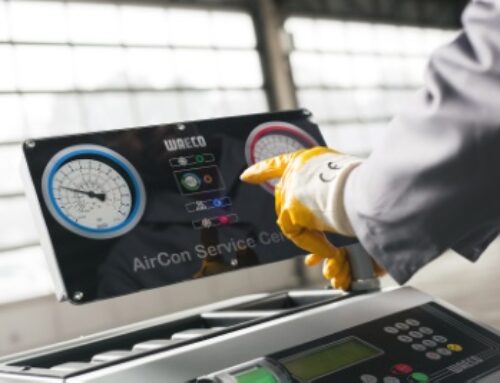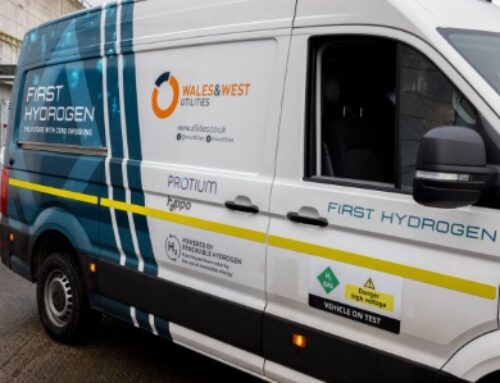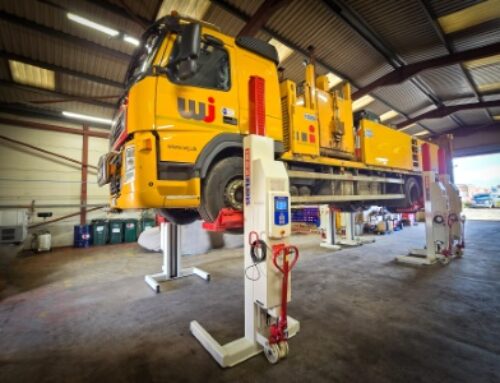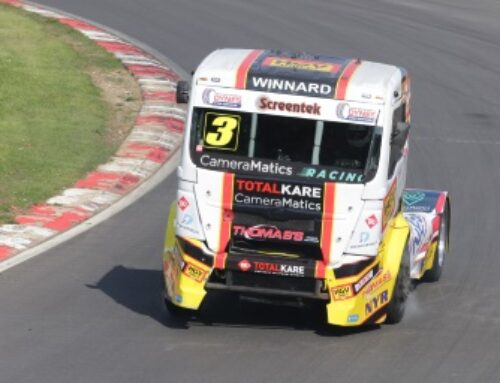EnerSys: TPPL tech can boost CV performance
 Battery provider EnerSys has outlined the performance advantages of Thin Plate Pure Lead (TPPL) battery technology now available for CV applications on the European market.
Battery provider EnerSys has outlined the performance advantages of Thin Plate Pure Lead (TPPL) battery technology now available for CV applications on the European market.
In recent years, electrical loads on trucks and buses have increased significantly, the firm points out, leading to a sharp rise in vehicle breakdowns as batteries are unable to handle the heavier demand.
TPPL is one answer to fleet owners’ and operators’ requirements for better performing batteries, the firm contends, citing durability, depth of discharge and deep-cycle capability to support high auxiliary loads – as well as significantly reduced total cost of ownership (TCO).
“The increase in electrical loads is due to several factors, including rising driver expectations, more widespread use of personal devices within commercial vehicles, and increasingly stringent legislation,” explained Dr Thomas Verghese, technical manager at EnerSys.
“‘Hotel loading’, which refers to the time truck drivers spend in their vehicle cabs overnight, is a prime example of this. Drivers use a variety of equipment for lighting, cooking, heating and air-conditioning, as well as to power gaming consoles, phones and laptops for entertainment and work purposes.
“The challenge is for the battery to support the truck on the road all day, then supply power throughout the evening without the need to repeatedly turn on the engine, while retaining enough in reserve to get the vehicle started the following morning.”
Buses and coaches, while not experiencing the same hotel load levels as trucks, often now include sockets to support entertainment and communication devices used by both passengers and drivers, adds Thomas.
“In this scenario, for example when a coach is parked at a service station with the engine switched off, increased demand is placed on the battery, but it must still be relied on to restart the engine,” he said.
“European emission standards and low emission zones designed to reduce diesel pollution are also having an effect. Drivers are being encouraged or instructed to use electric night heaters instead of running the engine in the morning to warm their cab, or when awaiting deliveries or collections.
“In line with this, many operators employ on-board telematics systems to check engine idling and ensure it is minimised. In all cases, this adds to the load on the battery, increasing the need for reliability and fitness for purpose.”
Showcasing the advantages of TPPL, EnerSys cites industry-standard testing carried out on its latest Odyssey batteries. They proved able to support a typical load for over 14 hours and then start an engine, compared with a competing product’s 6.5 hours’ endurance, says the firm, representing a performance improvement of over 100 per cent.
“The technology accommodates more energy-storing pure lead plates in any given volume, resulting in considerably more useable capacity on demand, and a superior cycle life compared with competing products,” said Thomas.
“This enables the batteries to cope with multiple engine starts, and meet the heavy demands associated with hotel loading, auxiliary power, on-board systems and other modern fleet vehicle requirements where conventional batteries have failed.
“Additionally, the batteries can be discharged to a much higher depth compared to conventional types, while still providing a successful engine start on demand. This means they can be run for far longer without requiring an engine start, resulting in fuel savings and reduced carbon and NOx emissions.
“This energy density also provides an industry-leading cold crank amps (CCA) rating of up to 1500A for the DIN C (625) battery and 1300A for the DIN B (629) battery.
“There are further TCO gains. For example, the batteries can be stored on an open circuit, with no load across the terminals, without recharging for up to 24 months at 20°C. This massively outperforms alternative batteries that would normally achieve only six months’ storage life.”
 Vehicle maintenance costs are also reduced, he says, as the TPPL batteries provide the optimal stable voltages required by today’s electro-mechanical systems for longer than comparable battery types.
Vehicle maintenance costs are also reduced, he says, as the TPPL batteries provide the optimal stable voltages required by today’s electro-mechanical systems for longer than comparable battery types.
“This reduces stress on certain components, with fewer starts and lower currents. Maintenance time and costs are further reduced by eliminating the need for water top-ups.
“The proven ability to run at a 30 per cent lower state of charge compared with conventional flooded automotive batteries significantly increases the time between forced engine starts, resulting in major cost and CO2 emissions savings.
“The batteries’ ability to recharge quickly, with no limit on the charging current complementing their fast charge acceptance capabilities, reduces engine running costs and fuel use, while making more power available after a short time on charge. Fast charging has the potential to revolutionise delivery truck applications, where the stop-start nature of the application can lead to batteries never being fully charged.”
Alongside their power performance, Odyssey batteries offer operational benefits, says EnerSys: they have a high vibration tolerance, rated to EN 50342-1 V3 standard, reducing premature failure. Additionally, they have an extreme temperature tolerance of -40°C to +50°C, while their maintenance-free, non-spillable design is said to enable more flexible mounting, unrestricted transportation and safer handling.
The new Odyssey Performance Series batteries are now available in the European market following 15 years’ field experience, including in truck operations in the US.
“Although TPPL technology for DIN B and DIN C battery footprints is relatively new to Europe, this technology has already been successful in commercial vehicle applications, in the UK, for more than two years through extensive trials with Odyssey batteries,” said Dr Thomas Verghese.
“In October 2016, five double-decker buses in Edinburgh each had two Odyssey batteries fitted, replacing two 225Ah blocs. With a capacity deficit of 100Ah, the Odyssey batteries with TPPL technology outperformed the 225Ah blocs in every aspect. On some very cold mornings, only buses fitted with the Odyssey batteries were able to start without additional assistance.
“In another trial in October 2015, small-footprint 100Ah Odyssey batteries were used to replace 180Ah products. There were no issues detected. The batteries regularly reached a full state of charge after 18 months in service, with excellent discharge operation supporting both auxiliary and engine start functions.
“The proven track record of Odyssey batteries in the US is evidenced by the results from their use within a major retailer’s trucks. The trucks saw over a million miles on the road until being retired after 60 months’ service in November 2014. During this period, the retailer found that the batteries needed changing less frequently.”











